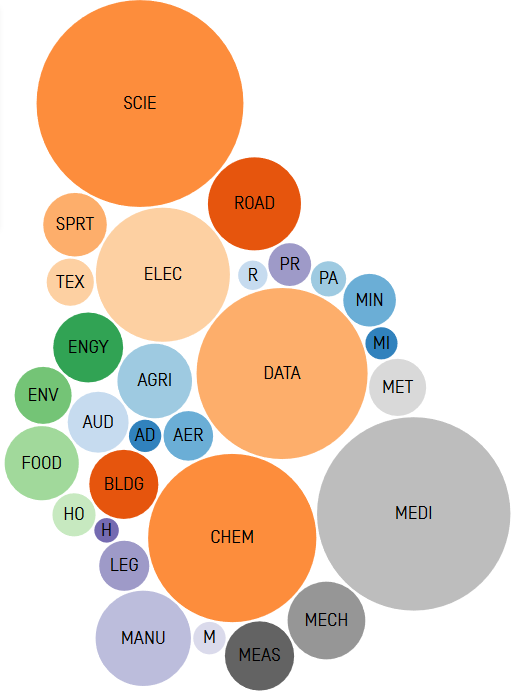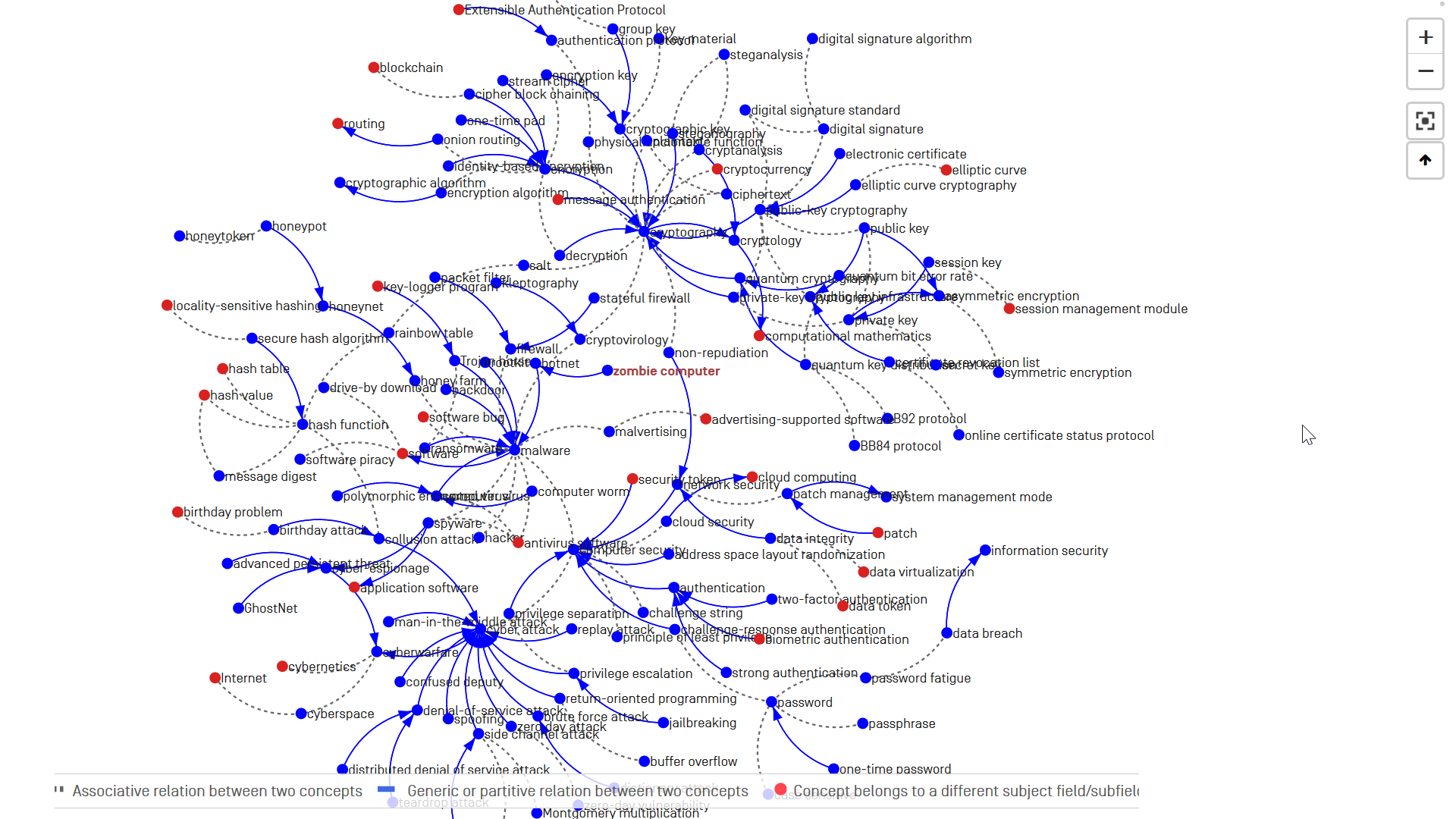This is a guest article by Jost Zetzsche. (See the end of the article.)
Years ago I rather briefly mentioned the impressive terminology repository WIPO Pearl,but after meeting Geoff Westgate of WIPO recently, I was once again reminded that it might be one of the most underused tools in our arsenal. I imagine it’s relatively widely used by translators specializing in patent translation (after all, “WIPO” stands for the World Intellectual Property Organization, and their 170-million-word-a-year translation efforts are mostly related to patents), but that doesn’t mean that the use of this term gem (how is that for a rock band name?) is limited to those translators. In fact, as the following graphic shows, if you are working in any of these fields (which extend to hundreds of subfields if you click on them), you are well-served with this terminology resource (not a great name for a rock band!).

WIPO Pearl is available in 10 languages (for both its interface and the data it contains): Arabic, Chinese, English, French, German, Japanese, Korean, Portuguese, Russian, and Spanish. You can do a regular bilingual or multilingual term search that will give you access to a number of filters, sophisticated definitions of the terms in questions, reliability score, sources, links to Google Images search and patent database Patentscope, as well as to a “concept map.” The concept map is particularly interesting and can be accessed separately as well.
According to WIPO’s own definition, the concept map is a “diagram illustrating the relationships existing between concepts in a specific area of scientific or technical knowledge.” Here is an example of a concept map:

The underlying software code for the maps was specifically developed by WIPO, and it’s beautifully dynamic in that you can drag any of the terms to your heart’s content and the whole diagram shifts along with your actions. Any of the terms is also clickable, giving you access to all the definitions and translations that are available. You can also simultaneously look for two terms to find out whether they are conceptually related.
I don’t need to tell you that this is a phenomenal tool if you need to familiarize yourself with various concepts and their relationships in a field that you are not completely firm on.
I also asked Geoff whether it’s possible to access the database with tools like IntelliWebSearch that would have to either make use of the URL containing the search terms or an API. Here is his answer:
“I discussed with the developers and we looked into the details. Currently, we have a fledgling API but it would need some modification to be fully suited for this kind of URL-based search. Since we have other developments underway in the next 2-3 months (including refining the API and making that available — though probably initially not so widely), we are going to look at the question again in autumn, also factoring in any data security aspects that this kind of change could imply (not yet clear to me what, if any, these could be). So, I’ll keep you updated as we move forward.”
Sounds good to me.
This article is a reprint from Jost Zetzsche’s latest Tool Box Journal (a computer journal for translation professionals), a prestigious monthly bulletin with in-depth, well-informed updates and discussions that recently celebrated its 300th issue.
Highly recommended! Tradiling has a link to the Tool Box Journal in the footer of every page.








